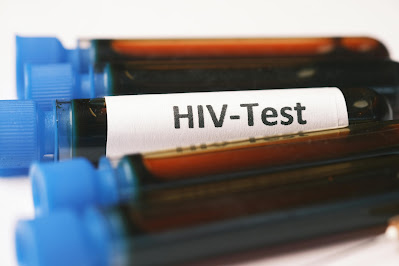Understanding HIV/AIDS
 |
| Understanding HIV/AIDS: Impact, Prevention, and Future Outlook |
What is HIV?
Human Immunodeficiency Virus (HIV) is a virus that attacks the body's immune system, specifically targeting CD4 cells, which play a vital role in fighting off infections. HIV can lead to Acquired Immunodeficiency Syndrome (AIDS) if left untreated.
What is AIDS?
Acquired Immunodeficiency Syndrome (AIDS) is the final stage of HIV infection, characterized by a severely weakened immune system, making individuals more susceptible to opportunistic infections and certain cancers.
Causes and Transmission of HIV/AIDS
Causes and Transmission of HIV/AIDS
HIV is transmitted through certain body fluids, including blood, semen, vaginal fluids, and breast milk. Understanding the modes of transmission is crucial in preventing the spread of the virus.
Modes of transmission
Unprotected sexual intercourse
Sharing needles or syringes contaminated with HIV-infected blood
Mother-to-child transmission during pregnancy, childbirth, or breastfeeding
Factors increasing the risk of transmission
Engaging in unprotected sex
Injection drug use
Having multiple sexual partners
Lack of access to healthcare and prevention services
Signs and Symptoms
Recognizing the signs and symptoms of HIV/AIDS is important for early diagnosis and treatment.
Early symptoms of HIV infection
Early symptoms of HIV infection
Fever
Fatigue
Swollen lymph nodes
Sore throat
Rash
Symptoms of AIDS
Rapid weight loss
Recurring fever
Profound fatigue
Prolonged swelling of the lymph nodes
Diagnosis and Testing
Early diagnosis of HIV is crucial for effective management and treatment.
HIV testing methods
HIV testing methods
Antibody tests
Antigen/antibody tests
Nucleic acid tests
Importance of early diagnosis
Early diagnosis allows individuals to access treatment and care, improving their quality of life and reducing the risk of transmission to others.
Treatment and Management
Advancements in HIV treatment have transformed the outlook for individuals living with the virus.
Antiretroviral therapy (ART)
Antiretroviral therapy (ART)
ART involves taking a combination of medications to suppress the HIV virus, allowing individuals to live longer, healthier lives.
Management of HIV-related complications
Treatment may also involve managing and preventing complications such as opportunistic infections and HIV-related cancers.
Prevention
Preventing the spread of HIV/AIDS requires a comprehensive approach that addresses both individual behavior and structural factors.
Importance of prevention
Importance of prevention
Prevention efforts are essential in reducing the incidence of new HIV infections and improving overall public health.
Strategies for prevention
Practicing safe sex
Using clean needles and syringes
HIV testing and counseling
Pre-exposure prophylaxis (PrEP) for high-risk individuals
Living with HIV/AIDS
Receiving a diagnosis of HIV/AIDS can be overwhelming, but there are resources and support available to help individuals cope and manage their condition.
Coping with the diagnosis
Seeking support from healthcare providers, counselors, and support groups can help individuals cope with the emotional and psychological impact of living with HIV/AIDS.
Support and resources available
Various organizations and community groups offer support services, including access to healthcare, medication assistance programs, and peer support networks.
Stigma and Discrimination
Stigma and discrimination continue to be significant barriers for individuals living with HIV/AIDS, impacting their quality of life and access to care.
Addressing stigma associated with HIV/AIDS
Addressing stigma associated with HIV/AIDS
Raising awareness and challenging misconceptions about HIV/AIDS are crucial steps in reducing stigma and discrimination.
Impact of stigma on individuals
Stigma can lead to social isolation, discrimination in healthcare settings, and reluctance to seek testing and treatment.
Global Impact of HIV/AIDS
HIV/AIDS remains a significant global health challenge, with millions of people affected worldwide.
Statistics and prevalence
According to the World Health Organization (WHO), approximately 38 million people were living with HIV/AIDS globally by the end of 2019.
Efforts towards eradication
Efforts to combat HIV/AIDS include increased access to testing and treatment, prevention education, and advocacy for human rights and social justice.
Future Outlook
Despite the progress made in HIV/AIDS treatment and prevention, challenges remain, and ongoing research is essential for improving outcomes and ultimately eradicating the virus.
Conclusion
HIV/AIDS continues to be a major public health issue, but advancements in treatment and prevention offer hope for the future. By increasing awareness, reducing stigma, and expanding access to care, we can work towards ending the HIV/AIDS epidemic.
FAQs
FAQs
Can HIV/AIDS be cured?
While there is currently no cure for HIV/AIDS, antiretroviral therapy (ART) can effectively suppress the virus, allowing individuals to live long, healthy lives.
Is HIV/AIDS only a problem in developing countries?
No, HIV/AIDS affects people in every country around the world, regardless of economic status or development level.
Can you get HIV from kissing or sharing food?
HIV cannot be transmitted through casual contact such as kissing, hugging, or sharing food or drinks.
What is the life expectancy of someone with HIV/AIDS?
With access to proper medical care and treatment, many people with HIV/AIDS can live long, fulfilling lives, similar to those without the virus.
How can I support someone living with HIV/AIDS?
You can offer support by being understanding and nonjudgmental, educating yourself about HIV/AIDS, and advocating for equal rights and access to healthcare for all individuals.






